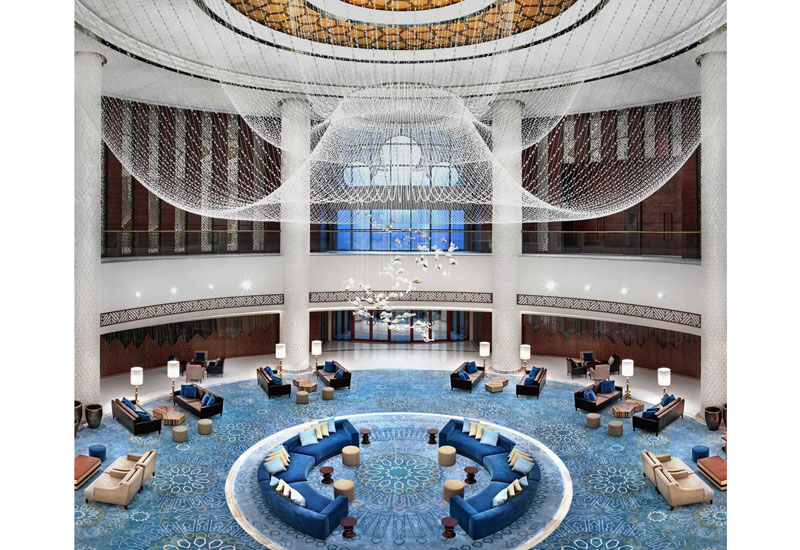The Middle East and North Africa has a reported total of 694 hotels currently under construction, and according to TopHotelProjects, 88,817 rooms will be added to MENA’s inventory of keys.
In light of this, differentiating properties from one another is going to be key in attracting guests to book rooms, eat at in-house F&B facilities, and use the signature spas. An important factor to achieve this differentiation will be the hotel’s design. In the run-up to a busy hotel opening season over the next few months, interior design will play a crucial factor as owners and operators look for something that helps them stand out.
Daniel During, principal and managing director of Thomas Klein International, says innovation in design is important. During, who has lived in Dubai since the late nineties and has worked closely with the hospitality industry, tells Hotelier: “There is not much innovation in Dubai, when you talk about different building structures — there is a tendency to ‘copy and paste’.

| Advertisement |
“Generally in Dubai you are faced with the situation where people come to you and say — ‘I have been to this restaurant in Shanghai or I saw this restaurant in London, can we franchise?’
“So that’s something we don’t do; we do not franchise, we develop our own concepts, home-grown.”
Simon Chambers, who is a partner in Godwin Austen Johnson (GAJ), further reveals what trends are set to change the hotel design landscape.
Chambers says there are three different revolutions taking place that will affect the way hotels are designed in the future: The concept revolution, space revolution and the operator revolution.
He states that the role of an operator is as important in the design phase as any other. “Operators and designers need to work together closely to create a genuinely original and innovative concept or brand. For some, simply developing an innovative theme, like the newly opened Book and Bed Hotel in Tokyo or The Margot House in Barcelona, is sufficient. However, for others, the brand revolution runs deeper, impacting on both brand standards and operations,” Chambers explains.
“We need to remember that the operator is in for the long haul. Immediately after handover, it is the operator who is responsible for maintaining the owner’s asset for anything from 10 to 20 years and so need to ensure that the building is designed and specified in such a way to allow the team to maintain it with relative ease,” he adds.
Hotel lighting design
Umaya: Lighting Consultancy design director Alex Shaw says that hoteliers tend to be quite knowledgeable about lighting. However, he adds: “What does happen occasionally is excessive value engineering, which ends up in poor lighting schemes that are not up to the brand standards. This is not something specific to the hospitality industry, but it is where bad decisions are more noticeable. That is why it’s extremely important to have workshops and do mock-ups during the design and specification process, so the client understands the reasons for going for a certain product.”
Shaw notes: “There is always room for savings, but it has to be done with criteria and always with the design intent and performance in mind.”









 Search our database of more than 2,700 industry companies
Search our database of more than 2,700 industry companies









